10 relevant terms offshore wind energy
Find out the ten most relevant terms of offshore wind power with Iberdrola
Offshore wind energy is, like onshore wind energy, a renewable, clean and inexhaustible resource. This technology also provides us with an excellent capacity for exploitation as it can take advantage of very large offshore areas, where the air reaches at maximum speed as there are no physical barriers in the way. We invite you to learn the basics of offshore wind energy through these 10 relevant terms.
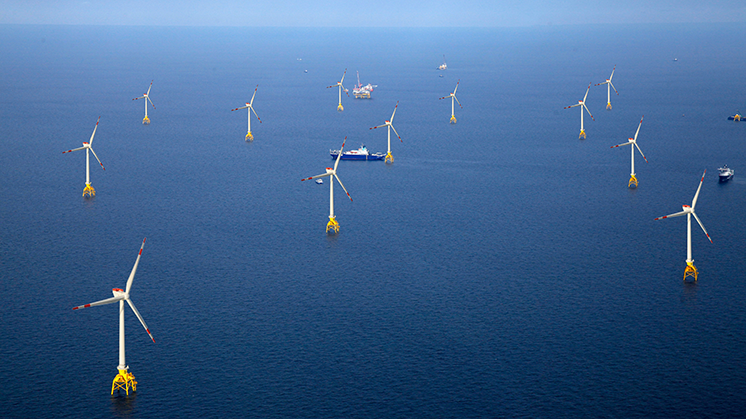
10 key terms to better understand how offshore wind energy works.
Offshore wind energy - or offshore wind power - harnesses the power of the wind on the high seas, where it reaches a higher speed and constancy as there are no physical barriers to slow it down, to produce electricity. Offshore wind is one of our greatest current growth vectors and a renewable technology in which there is increasing global interest, as well as greater research to access its installation at greater depths, reducing production and installation costs and making its development profitable and sustainable.
To exploit this resource to the full, mega-structures - with generators over 120 metres high and weighing thousands of tonnes - are built and assembled and sit on large areas of seabed. Unlike an onshore wind farm, whose wind turbines are easy to find in the landscape of many areas, few can see offshore wind farms up close. To make this fascinating sector more accessible, we explain the 10 most relevant terms for this energy source and the engineering work that goes with it.
Top 10 offshore wind energy terms
Piling and monopiling
Piles are the anchor points that are driven into the seabed in order to transmit the load of macro-structures, such as wind turbines or an offshore substation, from the surface of the ground to deeper layers of the subsoil (more than 30 metres deep). They are an essential structural element for the stability of these elements in the sea.
The monopile is a type of pile, a steel element of large diameter and length, which is sunk into the seabed like a pole with the function of serving as a fixed foundation for a wind turbine, providing a solid base for the tower and turbine.
Jacket
A jacket is an alternative foundation to the monopile that is also used to anchor and support wind turbines on the seabed. It is a complex steel lattice structure. The jacket is typically constructed onshore and then transported to the offshore installation site for assembly. Once installed, it is fixed to the seabed by piles to provide a stable, secure and wave and current resistant base for the wind turbine
Transition piece
The transition piece is the structure that provides a secure and stable connection between the foundation of a wind turbine (whether it is a monopile, jacket or other type) and the wind turbine tower itself. The transition piece is typically a cylindrical or conical steel structure which, at the top, is fitted to the base of the wind turbine tower and, at the bottom, is fixed to the foundation by bolts (a kind of bolts).
In addition to providing a secure connection, the transition piece can also serve as an access platform for technicians performing maintenance and repairs on the wind turbine tower.
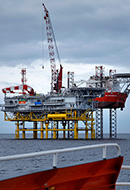
Construction of an offshore wind plant
Everything about offshore wind farm construction.
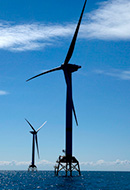
Evolution of wind energy in Europe
The European wind market has grown strongly over the last 25 years. Find out more.
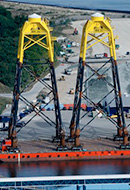
Offshore wind turbines foundations
How are offshore wind turbines anchored at sea?
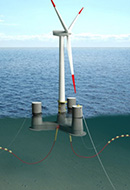
Floating offshore wind
A milestone to boost renewables through innovation.
Nacelle
The nacelle is the part of a wind turbine placed at the top of the tower where the generator is located, which together with the gearbox, converts the kinetic energy of the wind into electrical energy, designed in the case of offshore wind farms to operate in the harsh conditions of the sea. It is a highly specialised machine with three main components: the blades, the rotor and the generator. Our largest current offshore wind project - the East Anglia 3 offshore wind farm - will feature spectacular turbines with a unit capacity of 14 MW and a rotor diameter of more than 220 metres.
Marine substation
An offshore substation is used to boost the voltage of the electricity transported by submarine cables from the wind turbines of a wind farm to the onshore substation. Its installation is necessary when the offshore wind farm exceeds a certain distance from the coast in order to avoid electrical losses along the way.
 SEE INFOGRAPHIC: 10 relevant terms offshore wind energy [PDF]
SEE INFOGRAPHIC: 10 relevant terms offshore wind energy [PDF]
Draft
The draught is the vertical distance between the waterline and the base line or keel of a ship, including the part of the hull that is submerged. In the case of ships, the draft is fundamental to determine the depth of water necessary for them to be able to sail without running aground.
For floating wind turbines, the draft is measured in the same way as for ships, and for those with fixed foundations, the draft measures the depth at which the foundation is installed on the seabed: from the surface of the water to the point of support with the seafloor.
Floating platform: spar, semi-submersible platform, barge and tendon platform (TLP)
Floating offshore wind farms, which as their name suggests do not require fixed foundations on the seabed and can therefore be installed at greater depths, can be supported on different types of platforms with different anchoring systems to the seabed.
-
Spar: A cylindrical platform, also called a floating monopile, which places most of its weight at the lowest possible point, the submerged end opposite where the turbine is installed, to give stability to its vertical buoyancy. As turbines become larger and larger, they require very long cylinders to compensate for the weights, which makes this solution very difficult to manufacture, transport and install and an unusual variant.
-
Semi-submersible platform: This design seeks to minimise the surface area exposed to the water while maximising the volume, which displaces the water mass and provides buoyancy. To do this, it divides the volumes that provide buoyancy into several vertical cylinders that are joined by beams and braces to create a surface on which to install the turbine.
-
Barge: The beam and length of the platform (length and width) are significantly larger than the draught (height). Thus, the structure has a large surface area in contact with the water, which is precisely what gives it stability, as if it were a ship. To minimise movement and stress, the platform is usually fitted with heavy plates, surfaces that are placed below the waterline.
-
Tendon platform (TLP): Also known as a tensioned support platform, this is the most innovative model and the most technically challenging, as it does not float autonomously once the wind turbine is installed on it, but is supported by tensioned steel cables anchored to the seabed. In order to reduce the dimensions of the platform as much as possible and thus lower the manufacturing cost, this platform uses the star-shaped geometry of three, four or five arms to float without load and uses temporary floats for towing to the anchoring site and the installation of the wind turbine.
Mooring and anchors
The mooring is the element that fixes and connects, in a flexible manner, a floating platform to the anchoring point on the seabed. They usually consist of chains, steel cables or synthetic cables and the choice of one type of mooring or another depends on the depth, the type of floating platform and the oceanic weather conditions such as waves, currents and winds.
Anchors are the elements that fix anchorages to the seabed. Depending on the characteristics of the seabed and the loads, there are also different types to choose from: drag anchors, suction anchors, driven or drilled piles and gravity anchors.
Submarine cables
Submarine cables are used to transport the electricity generated by wind turbines over long distances to the coast. For this purpose, there are two types of cables: inter-array cables (internal to the wind farm), which generally connect the turbines to each other at a medium voltage level; and export cables (transport from the wind farm to the coast), which connect the turbines to the onshore power substation by means of high-voltage transmission, starting from the offshore substation where it exists.
These robust and heavy cables, which are 'laid' on the seabed, consist of several layers made of different materials, such as copper and aluminium for the conductive properties, steel for the armour or polypropylene for the insulation.
Fixed foundation
Fixed foundations are used for those wind farms that place their wind turbines on the seabed and do not support them through flotation systems. It can be fixed foundations with a monopile, where the tower is founded on a large cylinder, usually made of steel, embedded in the seabed; gravity support, which requires a concrete or steel platform of large mass and surface area that rests directly on the previously prepared seabed; and using jackets, steel structures in the form of a net with three or four anchor points on the seabed.
Current fixed foundation technology is used on sites up to 60 metres deep, but technology is allowing the depth of wind farms with fixed foundations to increase steadily.





